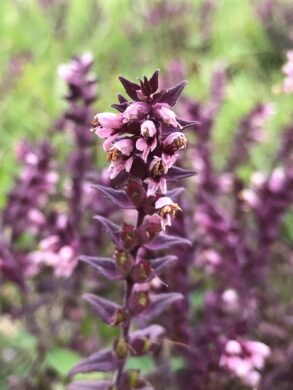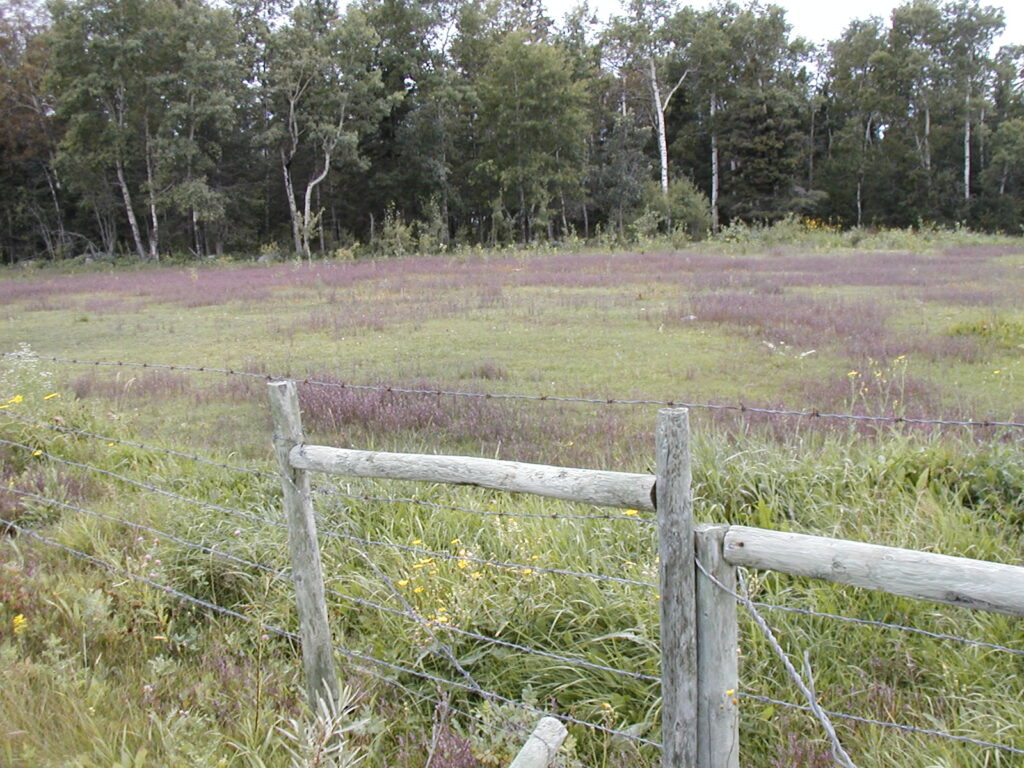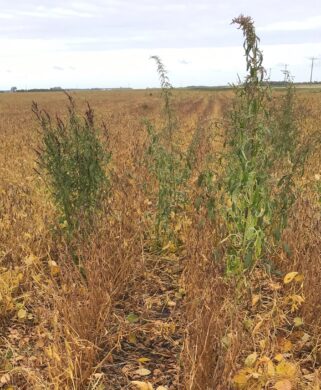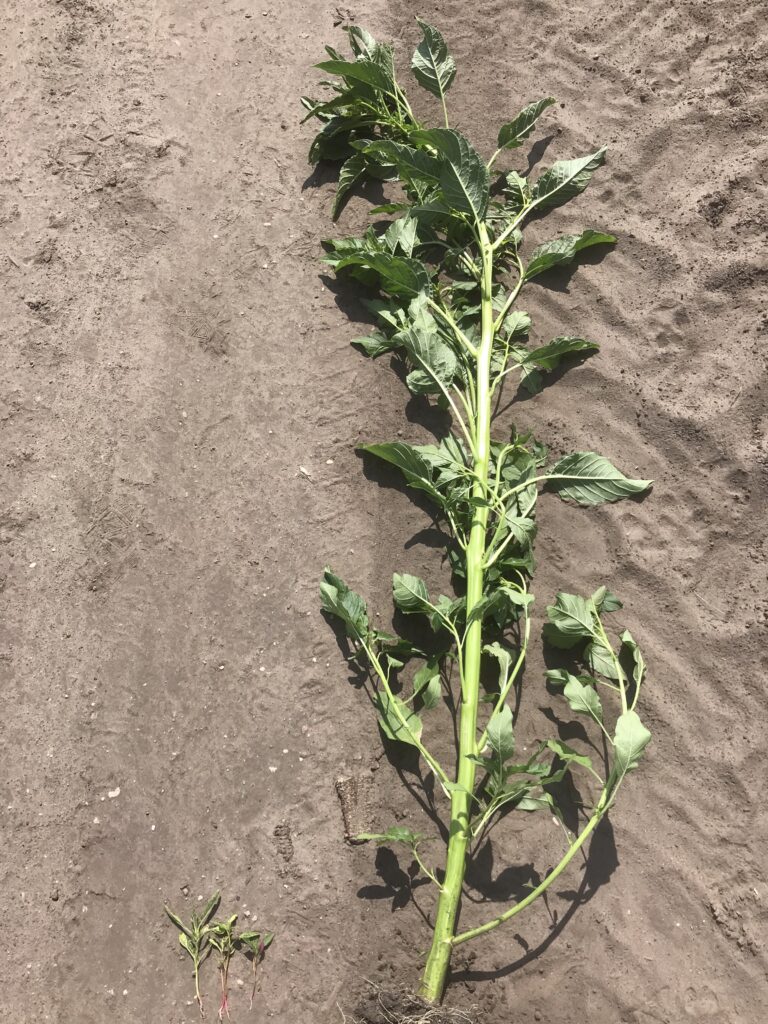What are Invasive Species?
Invasive Species are organisms (animals, plants, parasites, viruses etc) not native to a region that when introduced, either intentionally or accidentally, out-compete native species for available resources. Invasive species become successful in their new environments due to their high reproductive rates and absence of native predators and diseases. Invasive species can have negative economic, social, environmental and human health implications.
Aquatic Invasive Species
What are Aquatic Invasive Species (AIS)?
An aquatic invasive species (AIS) can either live in freshwater or marine environments. Most of the species of concern to Manitoba, such as Zebra and Quagga mussels, Spiny Waterflea, Rusty Crayfish and Asian Carp are freshwater species. Manitoba currently has 15 aquatic invasive species. This number is small compared to the number of aquatic invasive species found in the Great Lakes (greater than 200) and Mississippi (greater than 120) drainage basins.
Zebra Mussels in Manitoba
The aquatic invasive species zebra mussels are now in the RM of St. Clements in the Red River and Cedar Lake (confirmed in 2015) and Lake Winnipeg (confirmed in 2013). As of 2025, they have not yet been found in Gull Lake.
In May of 2014, the provincial government closed four harbours (Balsam Bay, Winnipeg Beach, Gimli and Arnes) and treated them with liquid potash, which is harmless to humans but lethal to zebra mussels. This successfully killed the zebra mussels in the treated areas but Zebra mussels were elsewhere in the south basin of Lake Winnipeg and are successfully reproducing.
Lake Winnipeg is in the early stages of invasion by zebra mussels – eradication is no longer an option. There is no technology available to eliminate them from a lake the size of Lake Winnipeg at this time. For Lake Winnipeg, the only option is to monitor and adapt to the effects of zebra mussels and prevent them from being established in other bodies of water.
In November 2015 the Manitoba government passed legislation making it illegal to transport aquatic invasive species, aquatic plants or mud on water-related equipment.
Zebra mussels are spread to new waters largely by contaminated boats and water-related equipment. Once zebra mussels become established they cannot removed, so it is extremely important to stop their spread.
How to Stop the Spread of Zebra Mussels
Adult zebra mussels have a hard shell and attach to anything that sits in the water. This includes boats, canoes, trailers, float planes, buoys, fishing equipment, etc. They can survive out of water for 7 to 30 days depending on temperature and humidity.
Larval zebra mussels, called veligers, passively move downstream by water movement and are invisible to the naked eye. Veligers rely on water to survive thus they can be carried in small amounts of water transported by un-drained watercraft, water-based aircraft, off road vehicles and water-based equipment such as bait buckets.
It is crucial to always clean, drain and dry your watercraft, trailer, float plane and all water-related equipment when leaving a lake or river. Drain or empty any standing water away from storm sewers, lakes and rivers. Dispose of any unwanted bait in the trash, not in the water.
For more details on how to stop the spread of aquatic invasive species go to the Manitoba Government’s website at www.gov.mb.ca/stopthespread/ais/how.html
Why do we need to be concerned about zebra mussels and other aquatic invasive species?
Zebra mussels are a highly adaptable, non-native species that are a significant environmental and economic concern to Manitoba.
- They disrupt ecosystems by eating food that other species rely on and changing the quality of the water
- They can attach to and smother other mussels
- A general rule is 90% of the native mussel population will die within ten years of zebra mussel arrival
- They attach to boats and motors reducing performance and efficiency
- The sharp shells attach to rocks, rafts and ladders and can cut swimmers feet
- They can clog intake and drainage pipes
Zebra mussels have caused millions of dollars in damage to the Laurentian Great Lakes area and have cost the North American economy billions of dollars to control. They were first found in North America in 1988 in Lake St. Clair which straddles the US and Canadian border in Michigan and Ontario.
What are zebra mussels?
Zebra mussels are small, finger-nail sized (1 – 3 cm), clam-like freshwater aquatic animals native to Eastern Europe and Western Asia. they are D-shaped with dark and light brown stripes. Unlike other mollusks, they have hair-like filaments called byssal threads that they use to attach themselves to hard surfaces including other mussels. They are highly adaptable. The female lays about one million eggs per year. Their lifespan is 2-5 years.
Can you eat zebra mussels?
Zebra mussels are small and do not have much in the way of “meat” inside them. Because they are filter feeders, they can accumulate pollutants in their tissues that may not be healthy for people to consume.
Resources
- http://www.gov.mb.ca/sd/waterstewardship/stopais/
- The Riding Mountain UNESCO World Biosphere Reserve (RMBR) has developed an ‘Online information kit’ that includes key links to Manitoba aquatic invasive species information sources posted by other jurisdictions, which are also striving to stop the spread at Spread the Word, Not the Mussels Information Kit
- https://www.lakewinnipegfoundation.org/zebra-mussels-101
Invasive Plants
Noxious Weeds Act of Manitoba
The Noxious Weeds Act of Manitoba (NWA) requires control or destruction measures for different invasive plants. A comprehensive listing of noxious weeds is found in The Noxious Weeds Regulation, which contains schedules that rank plants according to their threat levels and specifies the areas of the province to which these levels apply. The Act requires that Tier 1 weeds, must be eradicated without conditions. Examples of Tier 1 weeds that are currently negatively affecting Manitoba’s ecosystems are diffuse and spotted knapweed, orange hawkweed, red bartsia and tall waterhemp. Tier 2 weeds are also a significant concern, and include leafy spurge, common tansy, field scabious, and nodding thistle.
The Manitoba Weed Supervisors Association is comprised of and represents Weed Supervisors who are individually employed by Weed Control Districts formed by one or more Municipalities. Weed Supervisors are authorized through The Noxious Weeds Act of Manitoba (NWA) to ensure problematic weeds are dealt with appropriately on all lands in the districts they cover. Weed Control Districts, first started in 1964, have developed programs to deal with invasive plants such as leafy spurge and red bartsia. Prevention measures, early detection and rapid response by Weed Supervisors are critical for saving habitats from these types of invasive species.
More information on Invasive plants either threatening or already present in Manitoba can be found in The Noxious Weeds Act (C.C.S.M. c. N110) and the Noxious Weeds Regulation (Man.Reg.42/17), by contacting your local Weed District or at the MWSA website.
Invasive Species Awareness Week
The Province of Manitoba has declares the last full week of April as Invasive Species Awareness Week (C.C.S.M. c. I97). The Manitoba Weed Supervisors Association (MWSA) recognizes this week by highlighting just a few of the invasive plants considered to be a significant threat to the landscape of our province. Many of these invasive species are mistaken for wildflowers, but unlike native wildflowers, these species threaten agricultural productivity of both cultivated and non-cultivated land, as well as waterways and natural areas.
Invasive Plant Species in the RM of St Clements
Red Bartsia

Red Bartsia is a forage and pasture invader that was accidentally introduced to the Gimli area in the 1950’s. Red Bartsia is not a tall plant, reaching heights of just 15-30 centimeters, so it is a challenge to detect. The main identifier is the attractive reddish-purple spike-like clusters of flowers that form in late spring on the top half of the stem (see Picture 1). The leaves are small (about an inch long), narrow, and clasp the stem in pairs, and both the stem and leaves are hairy. One Red Bartsia plant produces 1400 seeds a year, which stick to clothing, fur, and vehicles enabling them to travel long distances. Red Bartsia outcompetes native vegetation, forming large patches of red in hayfields, pastures and roadsides and is a serious economic concern (Picture 2).
The economic impact of the Red Bartsia introduction in Gimli has been a key concern for the Interlake Weed Control District (formed in 1967). While control measures were undertaken in the late ‘60s, a truly effective program was not initiated until 1999. By that time Red Bartsia had infested much of the Interlake region. The weed is being controlled on the area’s roadsides, but the cost is significant. In the 2019 season, a total of $181,370.85 was spent controlling the weed on the district’s rights-of-way. With the district’s total known Red Bartsia infestation at 1,692.65 miles (one side), extensive seed reserves in the soil, and seed viability in the nine year range, there is no easy, quick fix for this problem. Red bartsia has recently been detected in three new municipalities, which is alarming. It is imperative that all areas incorporate careful monitoring and aggressive control measures to prevent further outbreaks. As with any invader, the best control is to prevent its initial introduction.

Tall Waterhemp

This member of the pigweed family can rapidly establish patches and seriously decrease the yield of crops. The plant typically grows to 5 or 6 feet tall, with glossy, hairless and more elongated leaves (lanceolate) compared to redroot or smooth pigweed. Waterhemp is well-adapted to warm growing temperatures and intense sunlight, and is capable of producing up to a million seeds per plant that tend to germinate throughout the summer (Picture 1 – August 2019). Waterhemp is native to the U.S. but was not considered a major agronomic problem until the 1980’s when herbicide resistance and changing production systems that included more corn and soybean favored the “weediness” of this plant.
While this weed was a feature weed last year, the fact that in 2019, five municipalities in Manitoba have had new detections of waterhemp made it a feature weed again this year. The native habitat of waterhemp is wet, low-lying areas, but it is quite at home in reduced tillage and no-till environments. Watch for patches to pop up along field edges or near the field entrance. Waterhemp has very tiny seed, (similar to red root pigweed seed), so it is easily transported in equipment, with water and by wildlife. Removing small patches of waterhemp prior to seed set, and destroying the plants, is one of the most effective strategies to eradicate this weed (Picture 2).

Invasive Insects
Emerald Ash Borer in Manitoba
The city of Winnipeg is now an emerald ash borer (EAB) regulated area. It is prohibited to move firewood of all species, as well as ash trees, ash nursery stock or ash wood (including wood chips, wood packaging or dunnage), out of the regulated area without written permission from the Canadian Food inspection Agency (CFIA). Moving these materials without permission could lead to fines and/or prosecution.
Businesses that wish to move this kind of material from the city of Winnipeg to another area should contact the CFIA to become part of the EAB compliance program.
History of Emerald Ash Borer in North America
Emerald ash borer (EAB), Agrilus planipennis, is a highly destructive invasive wood boring beetle that kills ash trees. First detected in North America in 2002, in Ontario and Michigan, it is thought that EAB was unintentionally introduced through ashwood packaging material or pallets. Emerald ash borer has killed millions of ash trees in Canada costing billions of dollars. Parts of Canada and the United States are under federal quarantines to help slow the spread of EAB across North America. Click here for a list of North America Emerald Ash borer regulated areas in Canada and the United States.
Biology
EAB has a one to two–year life cycle, depending on infestation levels and climate conditions. In Manitoba, it is thought that EAB will have a two–year life cycle. The larvae bore directly into the bark after hatching and begin feeding in the phloem (food conducting tissue) of the tree creating s–shaped galleries. This is the damaging stage of the insect, as the flow of nutrients in the tree is disrupted by the larval feeding. The larvae overwinter under the bark of ash trees and pupate in early spring. Adult emergence occurs from late May until the end of June. The average length of an adult emerald ash borer is 7.5 to 13.5mm long and 4mm wide.
The adults feed on ash foliage for two to four weeks. Once done feeding, from the end of June until the end of August, the adult female lays an average of 60–90 eggs on the bark of ash trees or in bark crevices.
Host
Emerald ash borer feeds on all ash trees (Fraxinus species).In Manitoba there are two native species of ash; green and black ash, which occur along riverbanks and in natural stands. These native ash trees, including several cultivars of these species, have been planted extensively throughout the province. Non–native Manchurian ash and cultivars of Manchurian ash have also been planted in many Manitoba communities and are also susceptible to EAB.
How EABs Destroy Ash Trees
- It is actually the larvae (caterpillar stage), not the adults that destroy ash trees. After hatching, the larvae bore directly into the bark and begin feeding just under the bark in the phloem (food conducting tissue) of the tree creating s-shaped galleries.
- This is when the damage occurs because the flow of nutrients in the tree is disrupted by the larval feeding. During winter, the larvae stay under the bark of ash trees and pupate in early spring (mid-April) with adult emergence in late May to the end of June.
- The adults feed on ash foliage for two to four weeks which is characterized by a notched feeding pattern on the leaves. This stage is not damaging to the trees.
- From the end of June until the end of August, the adult female lays up to 300 individual eggs (average 75) on the bark of ash trees or in bark crevices.
- Emerald ash borers have a one to two-year life cycle depending on infestation levels and climate conditions.
- It takes one to five years of infestation to kill the tree. At low levels the EAB is hard to detect, but after the population builds, ash trees start dying. In places like Michigan where the population of EAB went undetected for many years, millions of ash trees have been killed by this invasive species.
Signs and Symptoms
- Foliage appears less full and tree starts dying from the top
- Adults leave “D” shaped exit holes across the bark on infected trees
- When bark is removed, shallow “S” shaped tunnels are seen
- Epicormic shoots on branches may develop on the trunk
- Woodpecker damage and/or squirrel damage may be visible on the tree
- Bark cracks may develop
Learn the signs and click here to download a visual guide to detecting emerald ash borer damage.
Prevention
The Canadian Food Inspection Agency (CFIA) is responsible for preventing the movement of EAB into new areas. They have the authority to establish regulated areas to restrict the movement of infested materials to help prevent the movement of any goods that are infested with EAB. In Manitoba, The Forest Health Protection Act contains provisions that can be used to eradicate or contain emerald ash borer detections.
Monitoring
The CFIA, Manitoba Sustainable Development and some local communities place and monitor emerald ash borer traps across the province. Traps are set up in areas that have a high risk of infestation. When EAB is detected in a new area, a more intensive survey can be conducted to determine the extent of the infestation. This survey can include a visual survey to look for systematic trees, additional trap placement, and branch sampling.
Management
To slow the spread of EAB the CFIA has placed a regulated area around the city of Winnipeg. Movement of all firewood and all ash products from the regulated area to other areas is not permitted unless written permission has been given by the Canadian Food Inspection Agency.
Currently, emerald ash borer detection surveys are being conducted in the city of Winnipeg. These detection surveys will determine the size of the infestation and will be used to develop management options. Typical EAB management can include: quarantines, tree removal, treatment with insecticide, and replanting with a variety of species.
Treatment options are available for private ash trees. It is best to get quotes from an arborist for possible treatment options. All pesticide treatments must be conducted by a Manitoba licensed pesticide applicator.
You Can Help
Emerald ash borer is often spread by human activities. When people move firewood and material to new areas they can easily move emerald ash borer or other invasive species without knowing it.
Be vigilant. Learn about the signs and symptoms of EAB and report symptomatic ash trees or ash tree products to the Go Wild Manitoba App or Manitoba Sustainable Development’s tree line at 204–945–7866.
Tell others. An informed public is the first line of defense against this destructive pest.
Don’t Move Firewood. The movement of firewood and wood products around Manitoba and across Canada is one way that invasive species are introduced into Manitoba. Stop the spread of invasive species by purchasing locally sourced wood products.
Additional information
- Additional information on the emerald ash borer and the CFIA’s, ‘Don’t Move Firewood Campaign’ may be found on the CFIA’s website.
- Natural Resources Canada’s website has a guide for detecting EAB damage.
Members of the public are asked to report any EAB sightings to the CFIA through its website.
